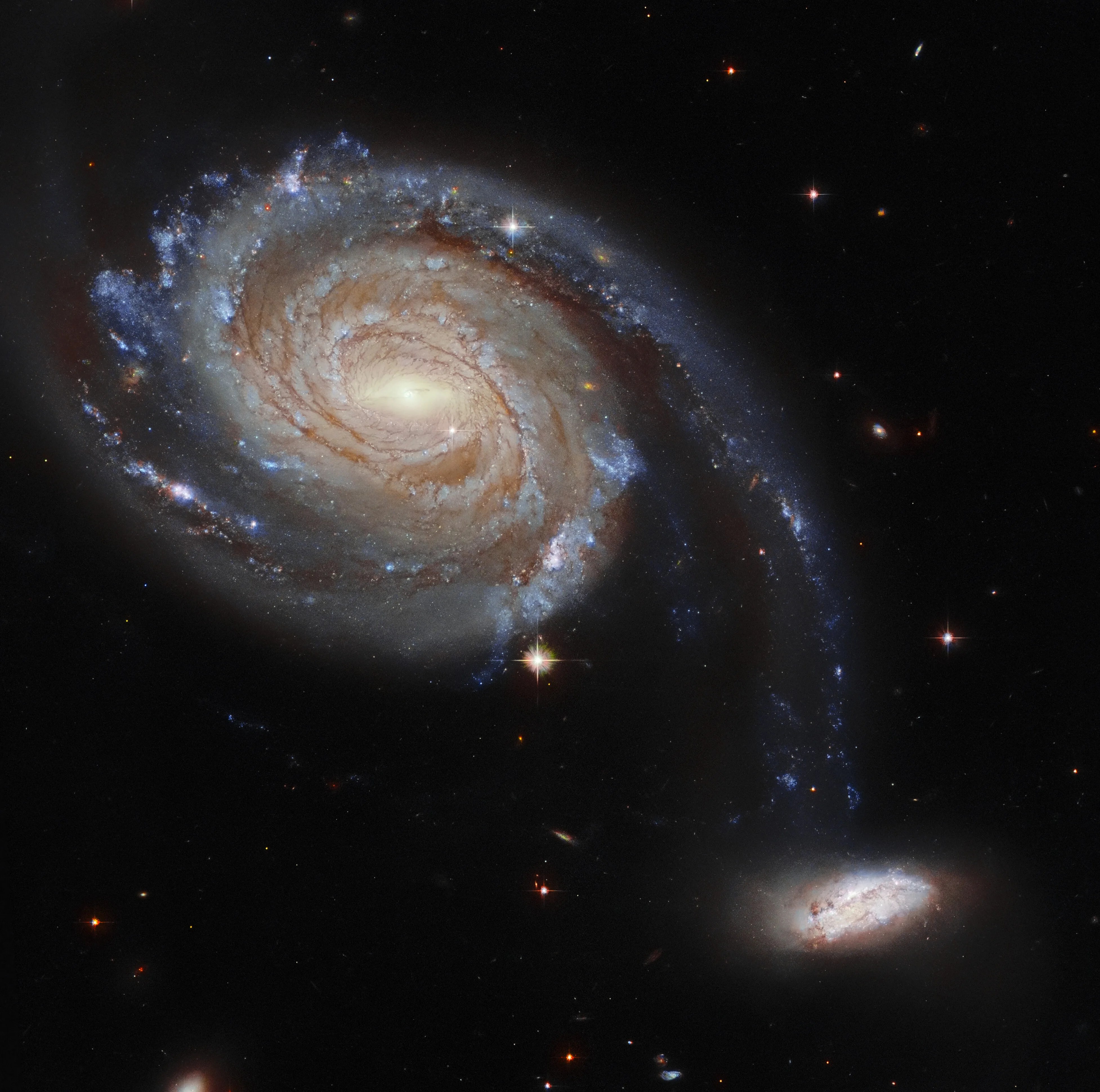2 min read

This observation from the NASA/ESA Hubble Space Telescope showcases Arp 86, a peculiar pair of interacting galaxies which lies roughly 220 million light-years from Earth in the constellation Pegasus. Arp 86 is composed of the two galaxies NGC 7752 and NGC 7753 – NGC 7753 is the large spiral galaxy dominating this image, and NGC 7752 is its smaller companion. The diminutive companion galaxy almost appears attached to NGC 7753, and it is this peculiarity that has earned the designation “Arp 86” – signifying that the galaxy pair appears in the Atlas of Peculiar Galaxies compiled by the astronomer Halton Arp in 1966. The gravitational dance between the two galaxies will eventually result in NGC 7752 being tossed out into intergalactic space or entirely engulfed by its much larger neighbor.
Hubble observed Arp 86 as part of a larger effort to understand the connections between young stars and the clouds of cold gas in which they form. Hubble gazed into star clusters and clouds of gas and dust in a variety of environments dotted throughout nearby galaxies. Combined with measurements from ALMA, a gigantic radio telescope perched high in the Chilean Andes, these Hubble observations provide a treasure trove of data for astronomers working to understand how stars are born.
These observations also helped sow the seeds of future research using the NASA/ESA James Webb Space Telescope. Due to launch later this year, Webb will study star formation in dusty regions like those in the galaxies of Arp 86.
Text credit: European Space Agency (ESA)
Media Contact:
Claire Andreoli
NASA's Goddard Space Flight Center
301-286-1940






